Reminds me of the beach at Madison Park, minus, of course, the Madison Park ducks.
His title – Dumbfucks at the Beach, at Peres Project. Swimming with ducks qualifies you for inclusion in his title.
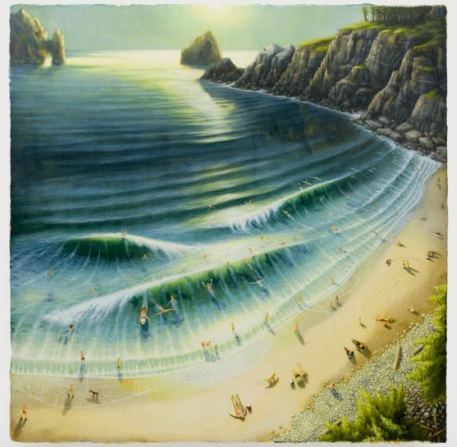
Regina Hackett takes her Art to Go
Reminds me of the beach at Madison Park, minus, of course, the Madison Park ducks.
His title – Dumbfucks at the Beach, at Peres Project. Swimming with ducks qualifies you for inclusion in his title.

Seen in a gallery in Ballard, another artist making early Robert Yoders who is not Robert Yoder.
Not Robert Yoder:
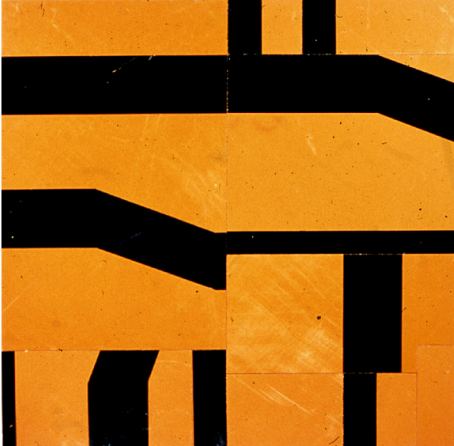
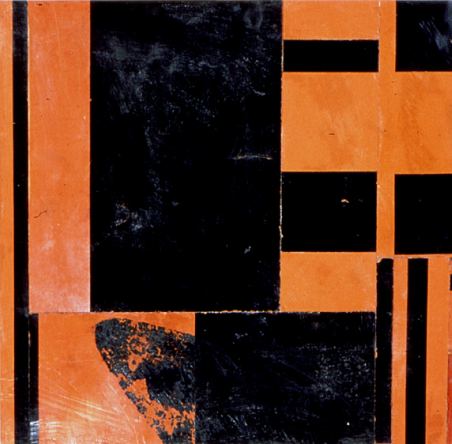 One artist unlikely to imitate Robert Yoder’s early work is Robert Yoder. He has moved on.
One artist unlikely to imitate Robert Yoder’s early work is Robert Yoder. He has moved on.
Akio Takamori creates figures that appear to be lost in thought, caught in that brief moment during any day when the body pauses and the mind drifts across its own mental sky.
Born and raised in Japan, Seattle’s Takamori pays his country of origin the honor of taking it lightly. Simply, even bluntly made with deft, loose color washes, his figures include spirit babies with oversize heads, priests, warriors, peasants and royalty with the folds of their gowns flapping. (more here)
Or no gowns at all.
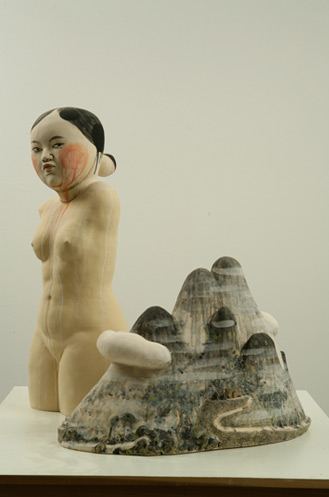
If light is a puddle that can be scooped up off the floor and allowed to crawl in finger-like forward motions all over a dancer’s body, that dancer (Ying Zhou) is working with video artist Susie J. Lee.
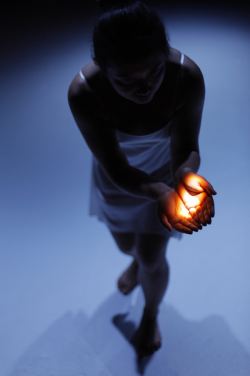 Lee’s contributions to For these Unclosings at Seattle’s Theatre Off Jackson last night (the last night) were riveting, but then there was everything else. Lee worked with a classy ensemble; nobody stank up the place. The problem arose in what they chose to do with their abilities.
Lee’s contributions to For these Unclosings at Seattle’s Theatre Off Jackson last night (the last night) were riveting, but then there was everything else. Lee worked with a classy ensemble; nobody stank up the place. The problem arose in what they chose to do with their abilities.
Emily Greenleaf accompanied herself on accordion with Meredith Monk-style vocalizations. Greenleaf is great, and I was grateful that I wouldn’t have to hear her be great for more than the 45-minute duration. This is music for teenage intellectuals who think that pleasure is suspect and shallow. Somebody has to perform it for that audience; others need to be warned at the door.
Although Ying Zhou is a lovely dancer, she served as choreographer for a piece that is indistinguishable from Martha Graham-influenced mime. (Emote! Emote!)
Success was all about the light. It burned and fondled, quite beyond its station, in a real-time interaction with the dancer.
Below, Ying Zhou erases it with her toe.
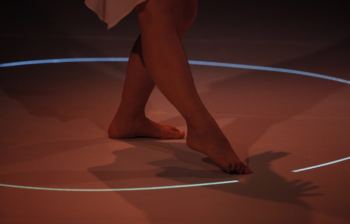 Photos, Cliff DesPeaux. Costume, Catherine Cabeen. Wizard-level video assistance, Andy Wilson, Emily Greenleaf, Keeara Rhoades and Reina Solunaya. Technical director, Okazawa M.
Photos, Cliff DesPeaux. Costume, Catherine Cabeen. Wizard-level video assistance, Andy Wilson, Emily Greenleaf, Keeara Rhoades and Reina Solunaya. Technical director, Okazawa M.
For a contrary view (including an elaboration on process), see Jen Graves.
I make sculptures and paintings about my anticipatory nostalgia for obsolescing paper media objects. The softness of a read newspaper page and the glossy slickness of a fresh magazine page are sensations embedded in our physical memory — the familiarity of touching these objects allows a relationship to form in the process of consuming the information they provide. When these objects disappear from our culture and assume the homogeneous texture of a back-lit screen, I fear that some of our intimacy with the process of reading will fade.
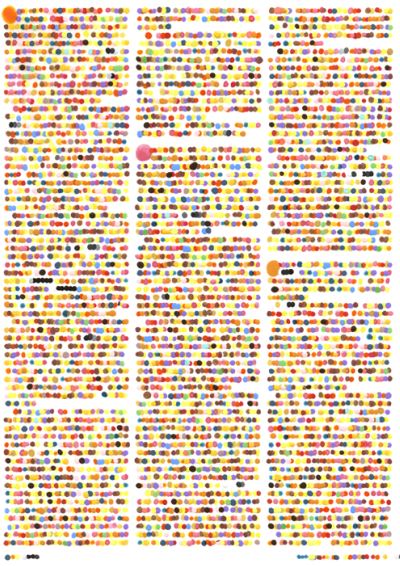
Or not. Blue-faced angel babies work cheap.
Ben Lawson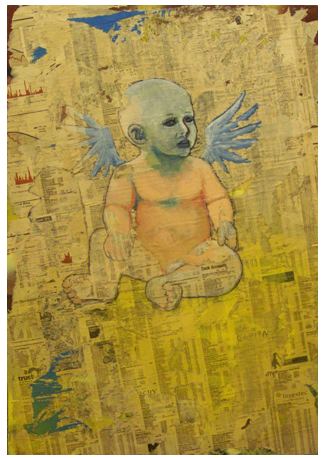 National Summit On Arts Journalism takes place Oct. 2.
National Summit On Arts Journalism takes place Oct. 2.
M. K. Guth’s Terrain Change at Portland’s Elizabeth Leach Gallery is a survey of aesthetic ideas realized more fully by others.
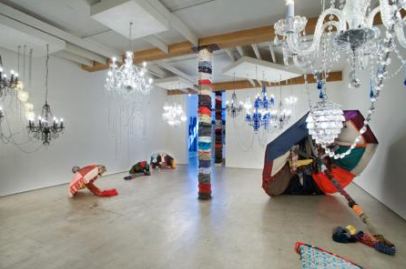 Pillars dressed in sweaters and jackets evoke Knitta. Guth’s umbrellas made of clothing are the best thing about the show, although overly dependent on early work by Cris Bruch. About her chandeliers, little can be said. I’ve seen their better.
Pillars dressed in sweaters and jackets evoke Knitta. Guth’s umbrellas made of clothing are the best thing about the show, although overly dependent on early work by Cris Bruch. About her chandeliers, little can be said. I’ve seen their better.
Guth:
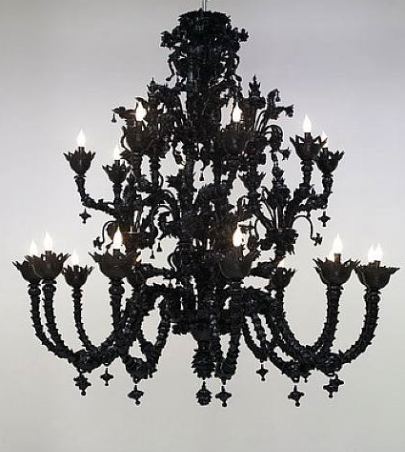 I wouldn’t review this show were it not for the sorry fact that Guth was the only Northwest artist included in the 2008 Whitney Biennial, where she had a room which she called “a unique opportunity to this particular place.” (Guth’s Whitney video interview here.)
I wouldn’t review this show were it not for the sorry fact that Guth was the only Northwest artist included in the 2008 Whitney Biennial, where she had a room which she called “a unique opportunity to this particular place.” (Guth’s Whitney video interview here.)
Her Whitney debut was a shabby (and didactic) version of Ann Hamilton in the 1980s, but I repeat myself, and I’m not the only one.
Guth’s version of relational aesthetics comes down to patting the audience on the head and giving it a simple-minded chore, like Yoko Ono at her worst. While I realize Northwest curators and critics (as a group) could easily have a view of NW art not shared in New York, picking Guth was a slam on far more interesting artists who engage the Whitney’s abject, multimedia installation theme, if it qualified as a theme.
Guth at Elizabeth Leach through Sept. 26.
He’s the new moon with the old moon in his arms.
Roman horse head made from bronze and plated in gold (2,000 years old) found at an archaeological site in Germany. (Story here.)
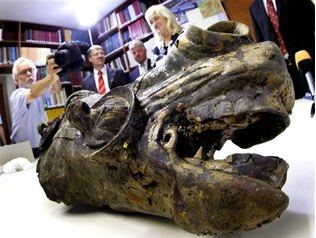 Scott Fife, at Platform Gallery through Oct. 10.
Scott Fife, at Platform Gallery through Oct. 10.
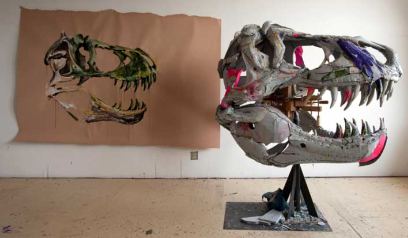
Ficus #2, 2009, oil/canvas, 30 inches square
The reproduced image does not serve painters such as Eric Elliott, now on view at James Harris Gallery. Reproduced, what is fluid becomes static.
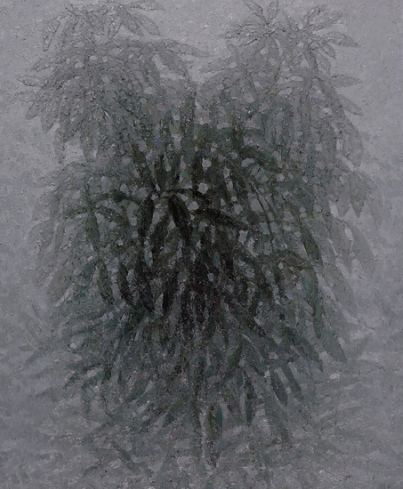 Elliott is interested in where the viewer stands in relation to his painting. In shaggy, blue-gray to dark-green tones, he reexamines Seurat‘s working methods: daubs of color laid side by side that dissolve to abstraction when viewed up close but assume the contours of representational form in the distance.
Elliott is interested in where the viewer stands in relation to his painting. In shaggy, blue-gray to dark-green tones, he reexamines Seurat‘s working methods: daubs of color laid side by side that dissolve to abstraction when viewed up close but assume the contours of representational form in the distance.
What doesn’t interest him is Seurat’s shimmering lights. Aside from Ficus 2, reproduced above, in his present show Elliott is happy to root around in painterly mud. Ficus 2 offers slender gleams of brighter shades buried subtly in the center, like fleeting hallucinations.
For Elliott, air is a contagion. It sticks to leaves and cramps their blooms, which press powerfully back to hold their own. He animates sludge, which is no small thing.
Through Oct. 3.
an ArtsJournal blog


